On April 9th, 1940, Hitler unleashed his military machine on Norway, breaking that country's neutrality and overwhelming the unprepared defenders at cities including Oslo, Kristiansand, Stavangar and Bergen. But the biggest threat to the plan was not the Norwegians. It was the British, and most of the Royal Navy's ships in home waters were in the North and Norwegian seas when the attack was launched. The bulk of Home Fleet had sailed on the 7th and as information about the attack trickled in, it was steaming in the gap between the Orkney Islands and Norway, well-placed to respond. Further north, a force led by the battlecruiser Renown had been tasked with covering minelaying operations on the 8th, and while they had missed the Germans headed for Narvik under cover of a storm, they would be the first to see action.
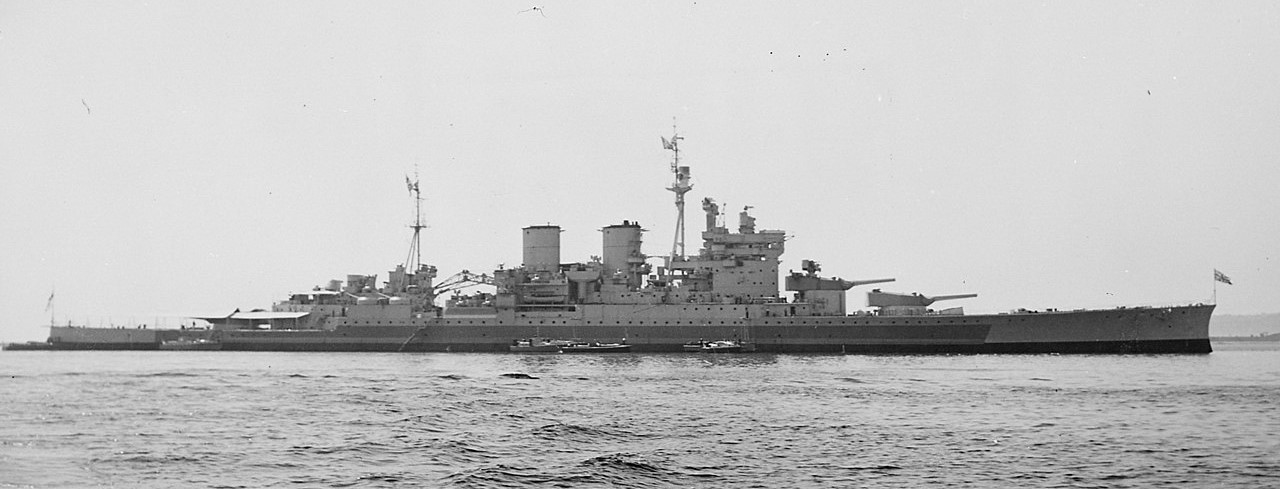
Renown
The destroyers headed for Narvik had been covered by battleships Scharnhorst and Gneisenau, who had headed out into the Norwegian Sea, straight into the teeth of a major storm. Both ships took a pounding, with Scharnhorst having to shut down one shaft temporarily after a broken ventilator let water contaminate several fuel tanks. The British fared slightly better, although conditions aboard the nine destroyers escorting Renown were as bad as anything the old hands could remember, and as the storm began to calm at daybreak, they turned southeast, back towards the entrance to Narvik. The Germans were ahead of them, on the opposite course, and Renown sighted the first of them at 0337, ten miles to the east and silhouetted against the dawn sky. Admiral William Whitworth, commanding the British force, ordered Renown to match course with the German ships, as his position gave him a major tactical advantage.
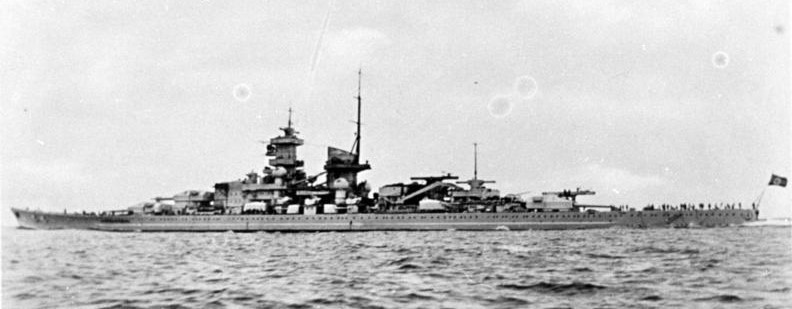
Gneisenau
Gneisenau picked up a contact on her radar at 0350, although it had been unreliable and her captain wanted visual confirmation before reporting it to the flagship, which took 9 minutes. Six minutes after that first sighting, while the Germans were still struggling to identify the ship, she announced her hostile intent with muzzle flashes. By the sixth salvo, the British shells had straddled Gneisenau, and the Germans, still rushing to battle stations, weren't able to start shooting back until 0410. The Germans, still struggling against poor visibility, thought there might be more than one ship engaging them, an impression helped when some of the British destroyers began shooting. Although their 4.7" shells fell far short, the flashes gave the impression of a second ship, at least until shells started landing near them and Renown ordered them to withdraw, as there was no chance of them getting into position for a torpedo attack in the rough seas.
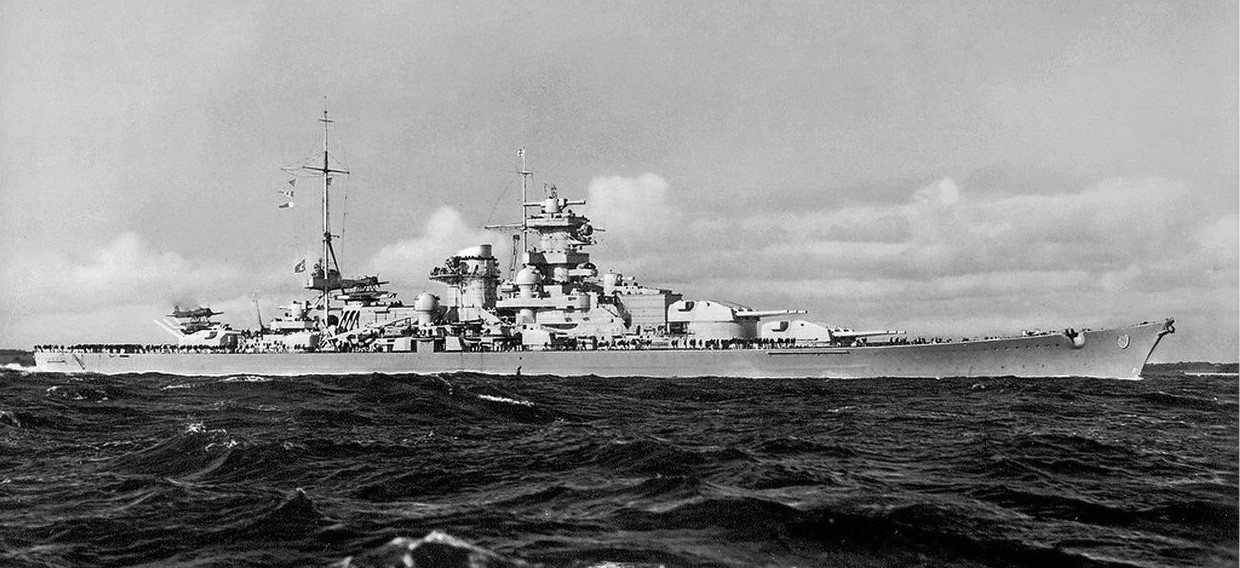
Scharnhorst
Despite the poor visibility, the Germans landed the first hit, with two 28 cm shells from Gneisenau hitting Renown around 0415. One struck her foremast, severing most of the radio cables, while the other hit a storeroom aft. Neither shell's fuze seems to have functioned properly, as damage was minimal. Just as Gneisenau’s crew saw their hits, though, Renown struck back, a 15" shell hitting the foretop and taking out the director, the radar and the fire-control officer. The German ship's fire ceased as control was transferred to the aft director, and the German commander, under orders to avoid action with a superior force and still not sure what he was facing, ordered course changed to the north, straight into the seas. This would limit the German battleships to their aft turrets, but also force the British ship to steer a course that would make fighting her forward guns difficult. Even as they made the turn, Renown landed two more hits on Gneisenau from her 4.5" secondary guns. One hit near the AA guns, doing minimal damage, but the other struck A turret, destroying a cover for the optical rangefinder. The rangefinder itself was undamaged, but the gap allowed some of the water cascading over Gneisenau’s bow to enter the turret, and the resulting flooding soon put it out of action.
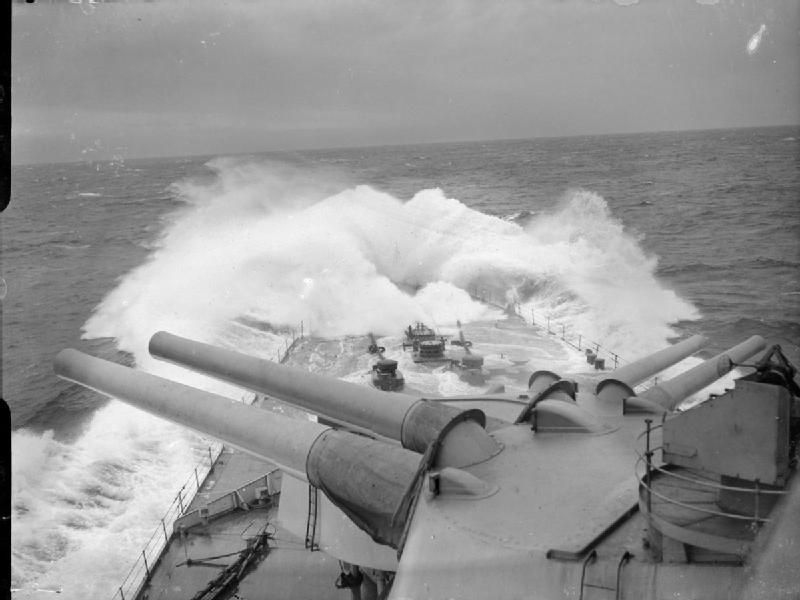
Heavy seas break across Renown's bow
Scharnhorst, seeing the pounding her sister was taking, made smoke and altered course to cross her stern, successfully drawing Renown’s fire, which was becoming increasingly erratic. The new course was sending massive amounts of water over her bow, washing out the fire-control optics and leaking into the turrets through the shredded blast bags.1 There was even water going down the gun barrels, which would boil from the hot metal and escape into the turret when the breech was opened, the steam making conditions even more unpleasant. The German ships began to pull away, and soon had reached a range where they could alter course after seeing the muzzle flashes, further frustrating Renown’s gunners. The weather continued to worsen, with rain showers periodically interrupting the battle, and Renown was soon forced to reduce speed to 20 kts to keep her forward turrets in action at all. By 0500, contact was sporadic, with Renown often forced to guess the best course to steer to regain contact when visibility cleared. By 0615, the Germans were cleanly away, and Renown was soon ordered to join her sister Repulse off Narvik.
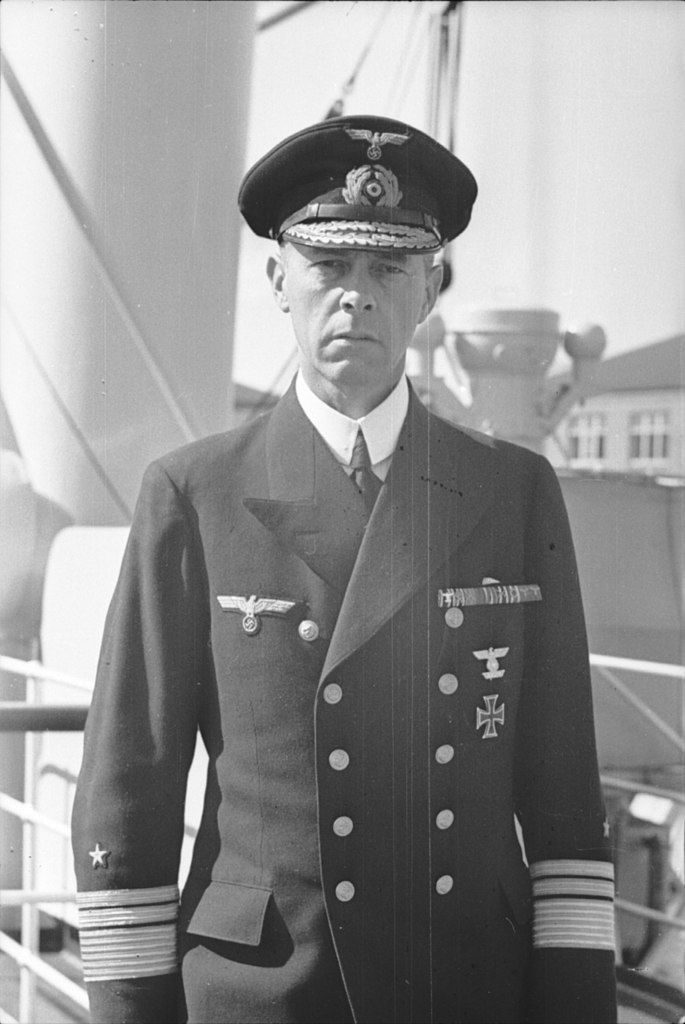
Gunther Lutjens
All three of the battleships had taken as much damage from the sea as from each other. Renown suffered significant damage from her own muzzle blast, including a hatch in the forecastle that let in a significant amount of water. Scharnhorst suffered flooding in both of her forward turrets through the ejection ports for the powder casings, thanks to the need to train the turrets aft. She was also suffering from engine problems which had reduced her to 25 kts at one point, and Admiral Gunther Lutjens, commanding the German force, decided to withdraw to the north, out of range of British air reconnaissance, and make repairs before returning home. They remained in the Norwegian Sea until the evening of the 11th, when, with most of Home Fleet now north of them, they turned back for Germany, dropping anchor at Wilhelmshaven late on the 12th, accompanied by Admiral Hipper from Trondheim.
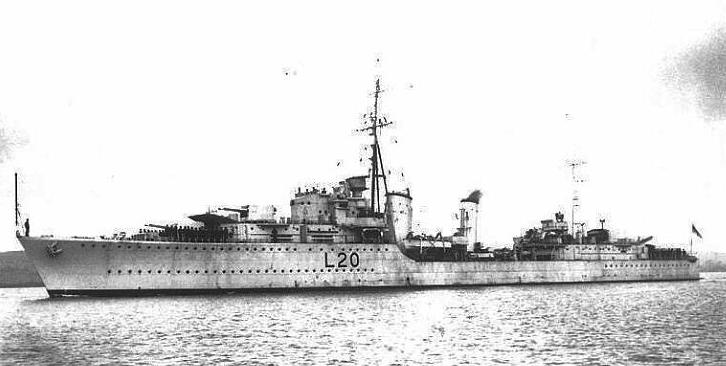
HMS Gurkha
Nor was the Action off Lofoten the only battle taking place off the Norwegian coast that day. The main body of Home Fleet was in the narrows between Bergen and the Shetlands, and as soon as word of the German invasion came in, plans were made to send a destroyer force to attack the Germans at Bergen. Seven Tribal class destroyers were dispatched, to be covered by a cruiser squadron, but the delays in their arrival thanks to heavy seas, the discovery of two cruisers at Bergen, and the uncertain status of the coastal defenses, led the Admiralty to call the operation off. On their way back, they came under attack by Ju88s of KG 30. Spray was badly interfering with the fire-control of the destroyers, and one of them, Gurkha, turned out of formation to try to improve her shooting. This was a fatal mistake, as the bombers quickly zeroed in on her, and a stick of bombs from high altitude riddled her aft section. Heroic efforts managed to keep her afloat, but it was obvious that this wouldn't last, and the crew finally managed to rig an antenna and call for help. Cruiser Aurora, sailing independently, picked up the signal and came to Gurkha's aid, arriving about five hours after the attack. Heavy seas made taking the crew off slow, and only half of them had been transferred when the Abandon Ship order had to be given. Excellent seamanship from Aurora meant that 199 of the 215 onboard survived.
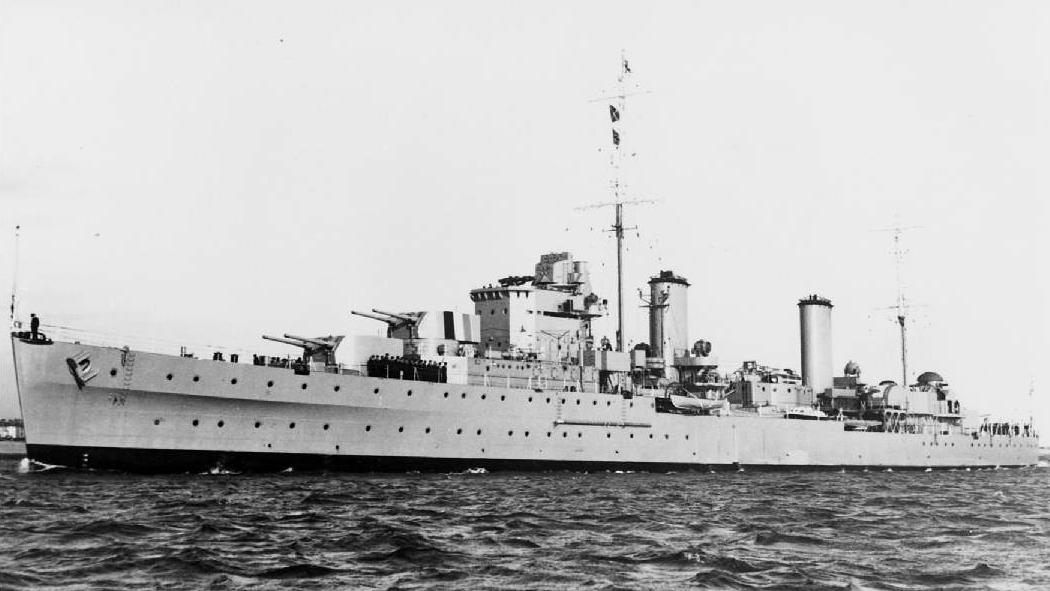
HMS Aurora
The main body of Home Fleet also came under air attack by a mix of Ju88s and He111s, the most intense air attack yet experienced by any naval formation. But between them, the two battleships, five cruisers and seven destroyers managed to put up enough flack to keep most of the Germans at a distance. A few tried risky high-angle dives, and one Ju88 landed a 500 kg bomb on Rodney's deck. Fortunately for the British, the bomb broke up, doing minimal damage. A number of other ships suffered near-misses, but the British brought down four of the attackers. Home Fleet withdrew to the north, although some of the cruisers were detached to watch the entrance to Bergen. Unfortunately, nobody seems to have realized that Koln was still in the fjords, and they withdrew before she attempted to sortie. They were ordered to Scapa to fuel, while the bulk of Home Fleet headed north. That was where the German battleships were, and Trondheim and Narvik were strategic cities much further from German air cover. But before we look at what happened there, we need to look at the battles for those cities, starting with Trondheim.
1 The cloth seals around the guns had been destroyed by muzzle blast early in the engagement. ⇑

Comments
It seems like incidental damage to unarmored components was a huge factor in warship engagements. Do you think this wasn't really appreciated before the war, or was there simply not much they could do about it?
(And did anyone ever suggest a strategy of "screw it, forget penetrating the armor, let's just mess up the superstructure with HE?)
There wasn't much they could do about it. There's only so much you can armor, and the director is always going to be too high to protect effectively.
That was the British plan for most of the period 1905-1916. Russia tried the same thing. Better AP shells made that less attractive by offering the possibility of reliably taking out vital things, although I'm not sure that the decision to focus on AP was actually right.
Remember reading in D.K.Brown that WW1 battleships were actually limited by deck space more than weight. There were only so many turrets you could cram on a ship, considering firing arcs and muzzle blast. AIUI, when a shell hit, it was likely to hit armor, and under that armor likely lay something vital, like boilers, turbines or a juicy ammunition magazine. So, if a shell actually hit, it might as well try for the big payoff. The damage to unarmored parts, however severe, was the consolation prize.
From the same books, I got the surprising (to an amateur) fact that warships weren't expected to stay in action after more than about 10 direct hits by weapons similar to what they carried. Which, IIRC, was about right for Jutland.
I have been given the impression that the period of time around WWII (late thirties/early forties) was an especially cold and stormy one for Europe and the North Atlantic. The winter of 1944 especially is noted as particularly brutal in the histories of the Battle of the Bulge I've read.
Was that true of the North Atlantic, particularly in these high latitudes?
The cold spike (storminess unknown) was 1940-2 (inclusive) over much of Europe, but mostly not its westernmost parts, suggesting not the Atlantic.
I recall that during the Battle of Leyte Gulf and the engagement of Taffy 3 the destroyer USS Johnston engaged a battleship. The destroyer's guns had no chance of piercing the battleship's armor and they had expended all their torpedo's earlier, so they mostly poured their fire into the battleship's superstructure. I think they did a lot of damage too, though ultimately they were destroyed by overwhelming numbers and firepower. The captain, Lt. Cmdr. Ernest E. Evans, was the only destroyer captain in WWII to receive a medal of honor (posthumously). So at minimum, if you were completely outgunned you could always try for the superstructure.
Other examples:
At Guadalcanal, USS South Dakota was effectively mission-killed by 26 hits from mostly cruiser guns, AFIK none of which penetrated her citadel.
At North Cape, KMS Scharnhorst was forced to disengage from three British cruisers when their shells disabled her radar in a low-visibility surface action
At Calabria, RNS Giulio Cesare was struck by a single non-penetrating 15" shell which damaged her funnels and started fires which took half her engines offline and reduced her to 18 knots.
And of course at Drobak Sound, KMS Blucher was mission-killed by two 11" shells deliberately aimed at her superstructure, then sunk by torpedoes.
It's not a ridiculous strategy. But it is a waste of heavy guns, which are optimized for penetrating armor. If you want to turn a battleship into an armored raft carrying ten thousand tons of burning scrap metal, a triple 6"/47 mount will deliver 162 kilograms of explosive per minute compared to 481 kg/min from bean's beloved triple 16"/50, but the 6" mount weighs 160 tons compared to 1700 tons for the 16" mount. And the 6" mount gives you 4-5 times as many chances for a direct hit on e.g. a fire control director.
So if that's your plan, maybe look at the most cost-effective light cruiser you can build in quantity. Which will also be better suited to A: choose the optimum range for that sort of engagement and B: close for the torpedo attack you'll need to finish off the target.
If anything I'd take Samar as evidence that mission-killing a battleship by wrecking the superstructure isn't easy: ~400 planes don't seem to have succeeded in doing that to any of them (though I'm not certain of that, and that number includes fighters whose 0.5" probably can't penetrate even a director), while a similar number with better weapons had outright sunk one the previous day. Afterwards there were several requests for (more) AP ammunition to be kept on shore bombardment ships in case it happened again.
As for what they did about it: having more than one director was the obvious starting point, so it would take more than a single lucky shot to disable the system for long.
Iowas apparently have a mode that uses one of the turrets as a director (as well as the local control mode where each turret fires independently), but as well as the inherently worse view from lower down (theoretical horizon ~12km, vs ~21km from the main director, plus smoke etc), I don't know how full-featured it is (I think at least ranges have to be passed verbally), and even those sights can be taken out by non-penetrating hits.
It's worth pointing out that attacking a moving ship is surprisingly hard with WWII weapons, and that the planes at Samar were piloted by people who had trained almost exclusively for ground-attack and air-superiority missions. Also, they were spreading their firepower across the entire fleet instead of focusing on one ship.
Re Iowa's directors, there was also one built into the conning tower that was the standard backup if both of the Mk 38s went down, before they went to turret control. It was very well-armored, but like all directors, vulnerable to optical damage.